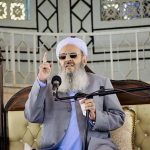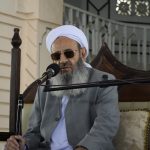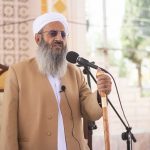Following the armed attack on the police station No. 16 in Zahedan (Saturday, July 8, 2023), Daily Etemad of Tehran in its issue of July 9, 2023, investigated the dimensions and origins of such incidents in a detailed interview with Ehsan Houshmand, journalist, sociologist and ethnic studies’ researcher.
The provincial and regional officials had mismanagement in resolving the bitter incident of Bloody Friday in Zahedan
Regarding the reasons for the occurrence of crises such as the attack on Zahedan Police Station No. 16, Ehsan Houshmand told Etemad (a Persian newspaper published in Tehran):
“One of the most important tasks of any governance system is to create public satisfaction and prevent the growth of any form of discontent. During the past 9 months, we have witnessed and are witnessing that some events in Sistan-Baluchistan province have caused some dissatisfaction. In fact, after the events of Bloody Friday in Zahedan in September 2022, which resulted in the death and injury of numerous citizens in Zahedan, until now, no fundamental steps have been taken to fully resolve this crisis. After the disastrous massacre of September 2022 in Zahedan, for the first time the government agreed to send a delegation to the region for investigation. Unfortunately, despite the passage of 9 months since that bitter incident, a punishment commensurate with those bloody events has not yet been decided.”
He further added: “In the first step, the representatives of the 13th government and then Mr. Ali Akbari went to the region for research and investigation and established appropriate strategies, but then the provincial and regional officials could not continue this process with the same initial approach and the issue was not handled well. The initial judicial verdicts issued against officials who mismanaged were not proportionate to the scale of the incident. To put it more clearly, no serious initiatives were planned to reduce these gaps. It was because of these gaps that after Friday prayers, Zahedan and some other cities of the province witnessed some demonstrations.”
This ethnic studies researcher continued: “But the deepening of these grievances has another side; Queues of public services and food, including bread (according to rumors, the quota of flour in this province has decreased, of course, the government denies it) have offended the people’s spirit.
The long queues of bread in different cities of the province and occasional interruptions of water, gas, etc. have caused an increase in negative speculations in the province. For example, a news spread that in Saravan, two citizens (Iranian and Afghani) got into a fight in the bread line, and finally one person was killed because of this fight. The government officials in the province should have accelerated the service delivery on the one hand, and on the other hand, they should have taken action to find the root of the incident.”
Hard confrontations instead of using soft methods and dialogue-oriented approaches make the atmosphere more inflammatory
Further, Ehsan Houshmand pointed to the “exploitation of internal grievances by external enemies and terrorist groups”, and noted: “The issue is that this inflamed situation can lead to recruitment, marginalization, radicalism, etc. in favor of foreign enemies. In this situation, the Islamic Republic of Iran Broadcasting could not provide an atmosphere of transparent and critical dialogue at the national and provincial levels. As a result of this discourse vacuum, foreign media took the initiative and transferred media authority abroad and from there injected their intellectual materials into the society. “
He added: “If the atmosphere of dialogue is formed in the country, our compatriots can find new windows towards common understanding and reduction of radical behaviors through elite, scholarly and field dialogue. In this 9-month period, instead of creating an atmosphere of interaction, the number of detainees has been constantly increased. These decisions have helped to inflame the atmosphere. In fact, instead of using soft methods and dialogue-oriented approaches, hard approaches have been used to reduce problems. Considering the presence of opposing parties, movements and armed groups outside the borders, it is natural that the enemies will exploit the inflamed atmosphere for the benefit of their agendas and engage in terror and insecurity.”
The grounds for dialogue between Sunni and Shiite clergy in Sistan-Balochistan should be improved
In the continuation of his interview, this journalist addressed the role of reference and influential groups in forming the atmosphere of interaction and dialogue and said: “It seems that the grounds of dialogue between the Sunni and Shiite clergy in Sistan-Baluchistan province have been damaged; this situation must be improved. In some cases, some clerics demand harsh treatments with the other party. Even after yesterday’s terrorist incident, some media outlets tried to link the issue to ideological and religious differences, which I don’t think is true and provides grounds for radical and terrorist groups. This is despite the fact that after the incident on Saturday, the clerics of both sides condemned these behaviors and sought to refrain from any kind of violence. This process should continue in the future to fill the gaps. Therefore, the roots of the problems can be analyzed at the national and regional levels. At the national level, the culture of dialogue and reaching a common understanding has not yet been formed, and at the regional level, on the one hand, the welfare and routine needs of the people have not been taken into consideration, and on the other hand, no planning has been done to punish criminals.”
Regarding the impact of development and regional problems in the north and south of Sistan-Baluchistan province, he also said: “During the past years, efforts have been made to strengthen the social and religious gap between the two parts of the province. The northern part of the province is home to Sistani and Zaboli compatriots, and they are generally Shiites, and the southern part of the province is mostly home to Iranian Sunni compatriots. Enemies have tried a lot to increase the gap between these two parts… In the meantime, there are some people who want to hear positions against the Sunni clergy through the Zabol clergy (who are Shiites) that will never be beneficial for solving regional problems, and it makes the gaps deeper. These decisions do not help to strengthen the interaction in the region, and it is possible to plan more wisely in this regard.”
Ehsan Houshmand continued: “Some strictures in social and economic issues (for example, fuel delivery, etc.) have sent this signal to the public opinion of the region that the state does not have the necessary flexibility for interaction and dialogue and seeks to solve equations using inimical methods, while some Takfiri and terrorist groups outside the borders are looking for openings through which they can harm the country’s security. Saturday’s terrorist operation was planned in the direction of such efforts.”
The need to pay serious attention to elite interaction and talk with Molavi Abdol-Hamid and other influential figures in the region
In the end, this ethnic studies researcher offered solutions to overcome these challenges and noted: “It is time for the government to take the initiative and to open the way of interaction with a number of elites and clerics from Balochistan in a serious and purposeful way. Molavi Abdol-Hamid’s statement on Saturday to abjure terrorists and condemn this incident is also important. He emphasized that demands should be pursued and proposed through peaceful means.”
He further added: “Another important point is the interaction of national elites. In some cases, the atmosphere of the province is so suffocated and congested by the police-security atmosphere, that the way of elites and political and national activists to the region to talk with Molavi Abdol-Hamid and other clerics and officials of the province is closed. Practically, mediation groups that can bring the views closer together and possibly extract solutions through interactions are not able to mediate and play their role. Unfortunately, the main role in the field has been assigned to domestic and foreign extremist media to deepen these gaps. It seems that in such an atmosphere, in order to reduce costs, sufferings and pains, divisions and… the rationality that is necessary to be adopted by the political elites (both inside and outside the system) is not observed.”
Ehsan Houshmand clarified: “It is necessary to plan conversations with Molavi Abdol-Hamid and other influential regional figures in order to find an interactive solution. I emphasize that the civil and social capacities of Sistan-Baluchistan province are very high and through it and through regional interactions, a solution can be found to overcome the existing problems. Sending research, expert and fact-finding groups with considerable authority to talk with influential groups and provide solutions such as releasing prisoners, reducing pressure and punishing some perpetrators of recent incidents can slowly shape the atmosphere towards interaction and return to normal conditions, otherwise, the continuation of the current conditions will lead to the spread of mistrust as well as the increase in the activities of radical and terrorist groups.”









Comments